10 Tips for Inflatable SUP Storage
Proper inflatable SUP storage can increase your paddle board's longevity. It can also save you time when you're planning to head out. By following a few simple guidelines you'll be able to avoid any mishaps caused by improper storage while learning how to make your SUPing experience smoother and therefore more enjoyable.
Start your next day of paddling or your whole season off right with a board that's fresh, clean, and ready to hit the water day after day and year after year. Save time, money, and hassle by keeping your board in proper conditions for long-term and short-term iSUP storage. It's super easy to do! Just by following the storage steps below.
How Do You Store an Inflatable SUP?
What's the proper way to store your stand up paddle board? Well that depends on several factors. Because of the variety in board materials and construction you'll find a variety of recommendations out there on the internet. However, this article focuses solely on the storage recommendations for inflatable stand up paddle boards. Check out our tips to help you achieve ideal results when storing your board. Regardless of whether it's for short-term or long-term storage, there are a few conditions you should always try to meet.
Why Proper Paddle Board Storage Matters
Proper storage of your stand up paddleboard is essential for several reasons. Whether you're a seasoned paddler or a novice, understanding why proper storage matters can significantly impact the longevity and performance of your inflatable SUP. Here are the key reasons why proper SUP storage is crucial:
- Extends the Lifespan of Your SUP
One of the primary reasons for proper storage is to extend the lifespan of your inflatable SUP. These boards are an investment, and taking care of them ensures that they last for many years. Proper storage helps prevent premature wear and tear caused by environmental factors and physical damage.
- Maintains Performance and Safety
Proper storage ensures that your SUP remains in optimal condition, maintaining its performance and safety on the water. A well-maintained board provides better stability, buoyancy, and maneuverability, which are crucial for an enjoyable and safe paddling experience.
- Prevents Material Degradation
Inflatable SUPs are typically made from durable materials like PVC, but these can degrade over time if not stored correctly. Exposure to UV rays, extreme temperatures, and moisture can weaken the material, leading to cracks, leaks, and other damage. Proper storage protects your board from these harmful elements.
By following proper storage practices, you save time and effort in the long run. A clean, well-maintained board is always ready for use, reducing the time needed for cleaning and repairs before each paddling session. This means you can spend more time enjoying the water. The next section is packed with useful information, so let’s dive in! Grab your pen and paper because this one is going to be a doozie. Let's get started!
Long-Term Storage Tips for iSUPs
Table of Contents
1. Rinse your SUP before putting it in storage.
4. Dry your inflatable stand up paddle board AFTER you rinse and BEFORE you store it.
5. Don't store your inflatable SUP in direct sunlight for extended periods.
6. Store your inflatable SUP in the right temperature range.
7. You can store your SUP deflated or inflated, whichever suits your space.
8. It's OK to store your SUP inflated.
9. Store your deflated SUP lying flat on its side.
How to Store Your SUP[Tutorial Video]
10 Tips for Safe Long-term SUP Storage
1. Rinse your SUP before putting it in storage
Whenever you use your SUP you'll want to rinse it with freshwater afterwards. It's good to get into the habit of rinsing off your board after each use because getting rid of dirt and grit can extend its lifespan. It also prevents you from having to clean your board before you head out next time. SUP is an outdoor sport so a certain amount of mud is expected but with a good spray down after each time, you'll keep your paddle board in action over the long-term. Pay special attention to the area around your valve to keep it clean and working smoothly.

Pay attention to your SUP valve, fin boxes, and D-rings when rinsing your board off.
2. Don't use abrasive soap
You don't need to use soap every time; a freshwater rinse and towel down go a long way. However, it doesn't hurt to clean your board with soap every now and again.
If you do decide to use soap, check your manufacturer's recommendations to make sure your graphics stay bright. If nothing specific is suggested, look for something without any harsh chemicals. Marine supply shops usually carry several options that work well with iSUPs or you may have non-abrasive Castile soap on hand. If you're still unsure about the soap you're using, simply test it on a small section of the SUP and then check the results.
3. Don't overdo it
For a more thorough clean on occasion, use a rag or very soft bristle brush to sweep away dirt and debris. When cleaning your board, remember not to get too aggressive in trying to remove marks and stains. SUP is an outdoor sport and your board will take on some aspects of the environment that'll fade over time. It's great to have a nice clean board, but it's best not to cause abrasion.
4. Dry your inflatable stand up paddle board AFTER you rinse and BEFORE you store it
Make sure your board is dry before putting it away for storage and that the place it's stored will always stay dry- not partially dry, not only dry on sunny days, but always dry. Although inflatable SUPs are durable and built for the water, leaving them wet or in a damp place, can cause damage over time. It's not that a SUP would be unusable after being stored in less than ideal conditions for a short while, but you'll probably have to spend some time to clean it off before going out. More importantly, improperly storing your board regularly will cause deterioration in the long-run. A shady spot under a deck might be a good way to keep your board out of the sun for an afternoon or even overnight if you'll be paddling back to back all weekend, but it's better to rinse and return your board to a clean, dry place when you won't be using it for a while.

After rinsing, take a towel and make sure your paddleboard is fully dry before storing it in your SUP backpack.
5. Don't store your inflatable SUP in direct sunlight for extended periods.
Don't get the wrong idea, direct sunlight won't instantly damage your board, but repeatedly storing your equipment in direct sunlight will result in deterioration in the long run and shorten the life of your board. UV radiation is harsh and particularly damaging to PVC when exposed repeatedly day after day. If you're using your board throughout the day or drying it off after a fun time on the water, it's OK to leave it in the sun. If it'll be in the sun for long periods unused, like on top of your car all day, it's a good idea to think about finding a shady parking spot or covering your board up with a tarp or towel. For regular storage make sure your paddleboard has a shaded dry place. A shed, garage or basement work well for inflated boards and your board bag is a safe place for deflated storage.
 Always clean your inflatable board thoroughly before folding it and putting it in your backpack to prevent mold and mildew.
Always clean your inflatable board thoroughly before folding it and putting it in your backpack to prevent mold and mildew.
6. Store your inflatable SUP in the right temperature range.
This is less important than the key factors (1. Keeping your board dry and 2. Keeping it out of the sun), but climate control is something SUPers ask about often. Anywhere between 40-110 degrees Fahrenheit (5-40 degrees Celsius) is recommended. Again, inflatable SUPs are durable but extreme conditions aren't ideal for any sporting equipment and that's true for your paddle board too. Avoid freezing cold or baking hot conditions.
7. You can store your SUP deflated or inflated, whichever suits your space.
When deciding on inflatable SUP storage another factor to think about is whether you'll store it inflated or deflated. Either way is fine as long as it's clean, dry, and in the right temperature range. Inflatables pack down into a SUP backpack or bag so that they're convenient to store just about anywhere, even in a closet or on a shelf in your apartment. That said, if you have space, storing your board inflated can make it easier to take out on the water regularly.

An iSUP can be packed into its roller backpack and fits just about anywhere, from the trunk of your car to your closet shelf.
8. It's OK to store your SUP inflated
Many paddlers wonder; is it ok to leave an inflatable paddleboard inflated? Or, how long can I leave an inflatable SUP inflated? As long as it's out of direct sunlight, you can leave your iSUP inflated indefinitely. There are a few points to remember. Resist the temptation to stack things or place heavy objects on it. Over time, storing heavy objects on your board could cause a divot or impact the rocker of your board. Also, if you're storing your board inflated for the long-term, it's best to release a few PSI just in case your storage area gets too warm. This helps to prevent any damage to the board from the air inside expanding beyond the desired PSI.
9. Store your deflated SUP lying flat
When storing your board deflated, it's a great idea to use your board bag to protect it from abrasions. Make sure it's clean, dry and rolled or folded loosely. Then lay the bag on its side for long term storage. Storing it upright or standing on the edges of the board could increase wear on the rails.
Although your board will have creases at the start of the season if stored deflated, they'll go away once the board has been inflated again.
10. Remove your fins
With Thurso Surf's 2+1 Removable Quick Lock Fin Set there's no reason to leave your fins on where they could get damaged. The tool-free Quick Lock design allows SUPers to quickly and easily insert and remove their fins in seconds with zero hassle. That way you don't have to risk damaging your board or your fins. Rolling up your board with your fins on for storage could result in damage. Additionally, removing your fins before you rinse your board allows you to thoroughly clean your fin box.

Remove your fins before storing your board to keep them and your board in top shape.
Short-term SUP Storage
Our favorite way to store inflatable paddle boards is short-term because we love to get out on the water as often as possible! When storing your board, even if it's just for a day or two in-between paddles, it's best to follow the same principles for long-term storage. Give it a quick spray down to make sure it's clean and dry, and place it somewhere out of direct sunlight.
This doesn't take much effort and the better care you take of your gear, the longer it will last. Follow the guidelines above and find a designated place you can store you board for both long-term and short-term storage. Luckily as inflatables don't take up much space, you don't need a special garage or shed. As long as you have a regular spot to store your board, it'll be easy to maintain good SUP care and maintenance habits and to get out on the water often.
How to Store Inflatable Paddle Boards in Winter
Storing paddleboards during the winter months presents a significant challenge, particularly in regions with harsh climates. As previously mentioned, maintaining the correct storage temperature is crucial to preserving the integrity and longevity of your board. Canadian winters, for instance, are notoriously cold, and if your garage is not heated, it can become an unsuitable storage location for your paddleboard. Storing your board in a cold, unheated garage can expose it to freezing temperatures, which can cause several issues:
Material Degradation: Extreme cold can make the PVC material of your inflatable SUP brittle, increasing the risk of cracks and punctures.
Adhesive Weakening: The adhesives used in the construction of the board can become less effective in freezing temperatures, leading to potential seam failures.
Structural Stress: Repeated freezing and thawing cycles can stress the board’s structure, compromising its performance and durability.
Ideally, you should avoid exposing your board to temperatures below freezing and protect it from extreme temperature fluctuations. If you have been storing your paddleboard in an unheated garage, it’s time to reconsider your storage options as the cold winter months approach. Consider moving your paddleboard to a heated indoor space, such as a basement or a spare room. These areas typically offer more stable temperatures and protection from the elements.
Three Factors That Impact Your Inflatable Paddleboard's Lifespan
1. Grit, Grime, SALT, and Bacteria
Contact with abrasive elements like dirt, salt, and sand can cause undue wear and tear to your SUP. We recommend using the comfy carry handles or a handy shoulder strap to carry your SUP at all times. It shouldn't be dragged through the parking lot or even over sand when in use. Built up grit that's left on your board can also cause damage to the valve or the PVC material your board is made of when it's rolled and stored. If you store your board wet, mildew and bacteria can make for unpleasant smells and gradually eat away at your board too.
2. Sun Damage
Sunny days are often the nicest days to take your SUP out, but it's best not to store your inflatable paddle board in direct sunlight long-term. Over time, direct sunlight can fade the colors of your SUP and even cause damage to the PVC material of the board itself.
3. Time
The longer you have your board, the more wear and tear it'll be exposed to. Eventually every board will need to be replaced but don't worry; with proper care and storage you'll be able to use your board at peak performance for years to come.

Store all of your gear together with a board bag or an Inflatable SUP Roller Backpack.
Get Out There!
Stoked to learn more? Check out these related posts:
Check out these related posts:
By following these tips, you can ensure that your inflatable SUP remains in excellent condition, ready for many more adventures on the water. Happy paddling!


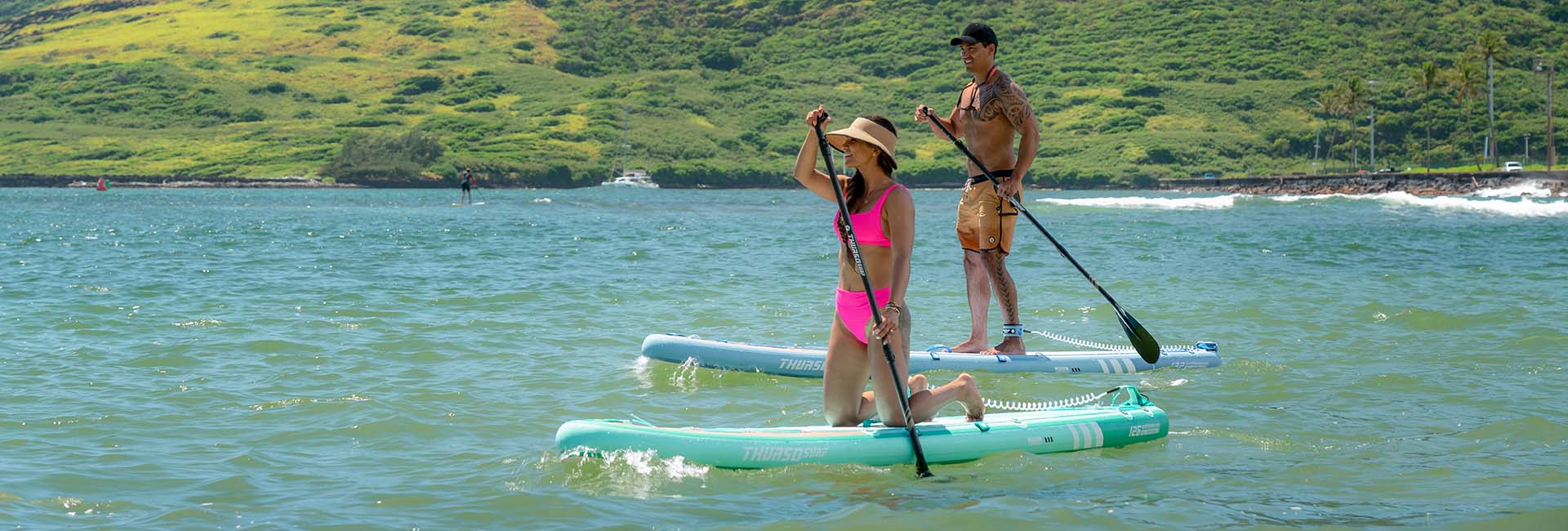



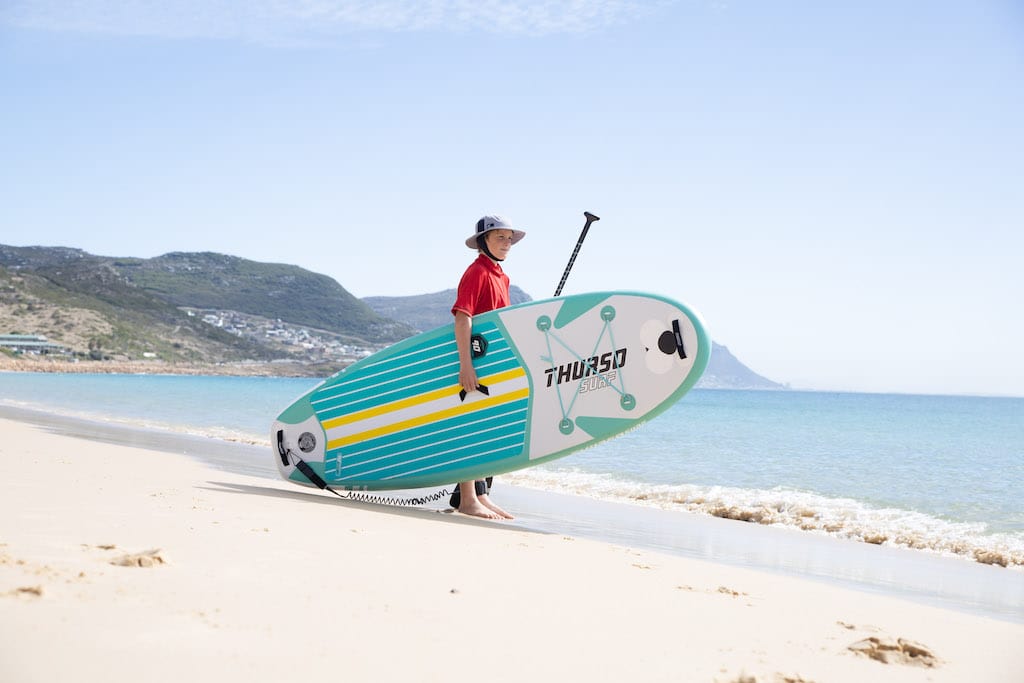

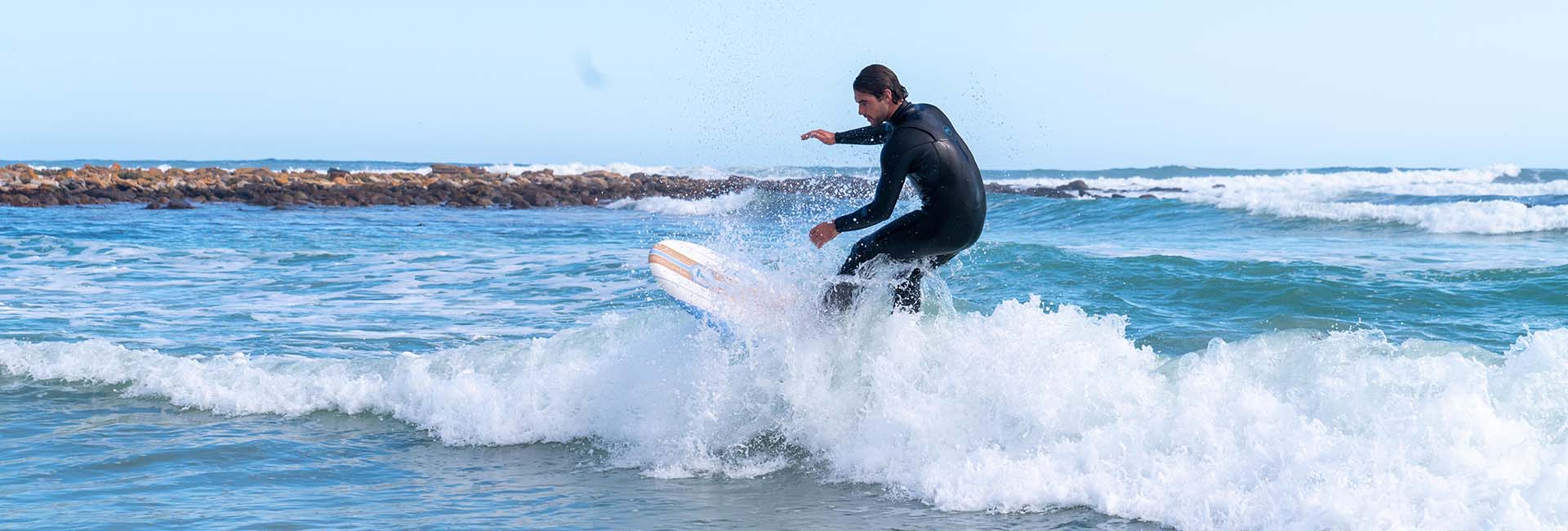
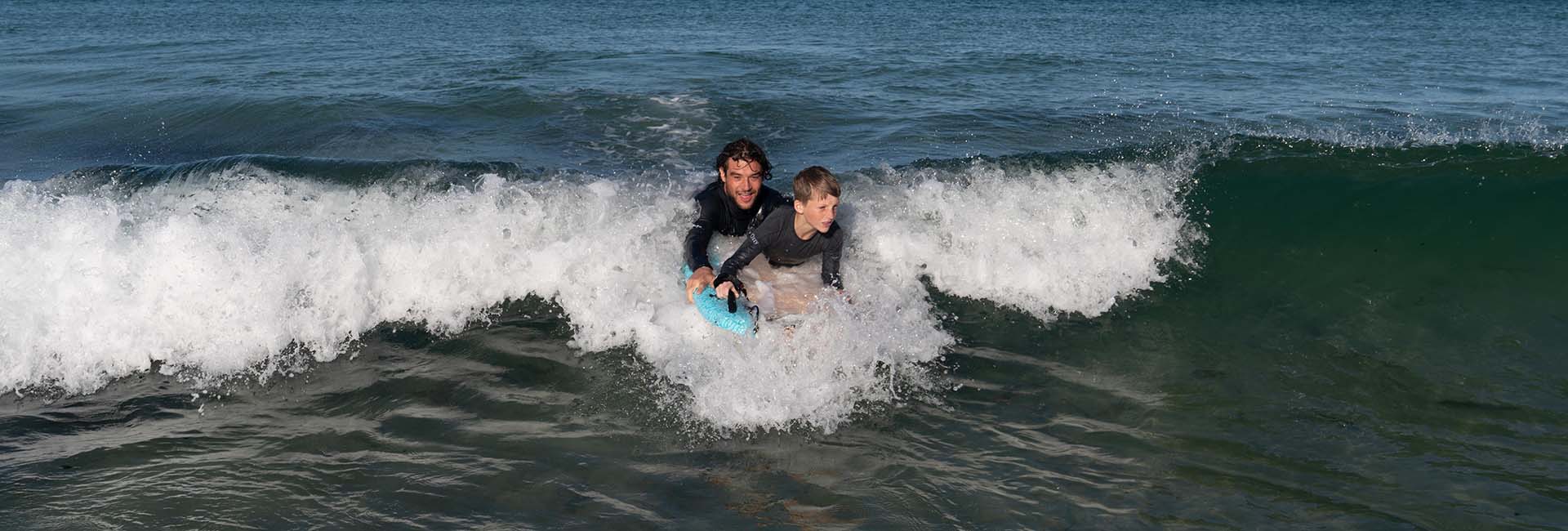
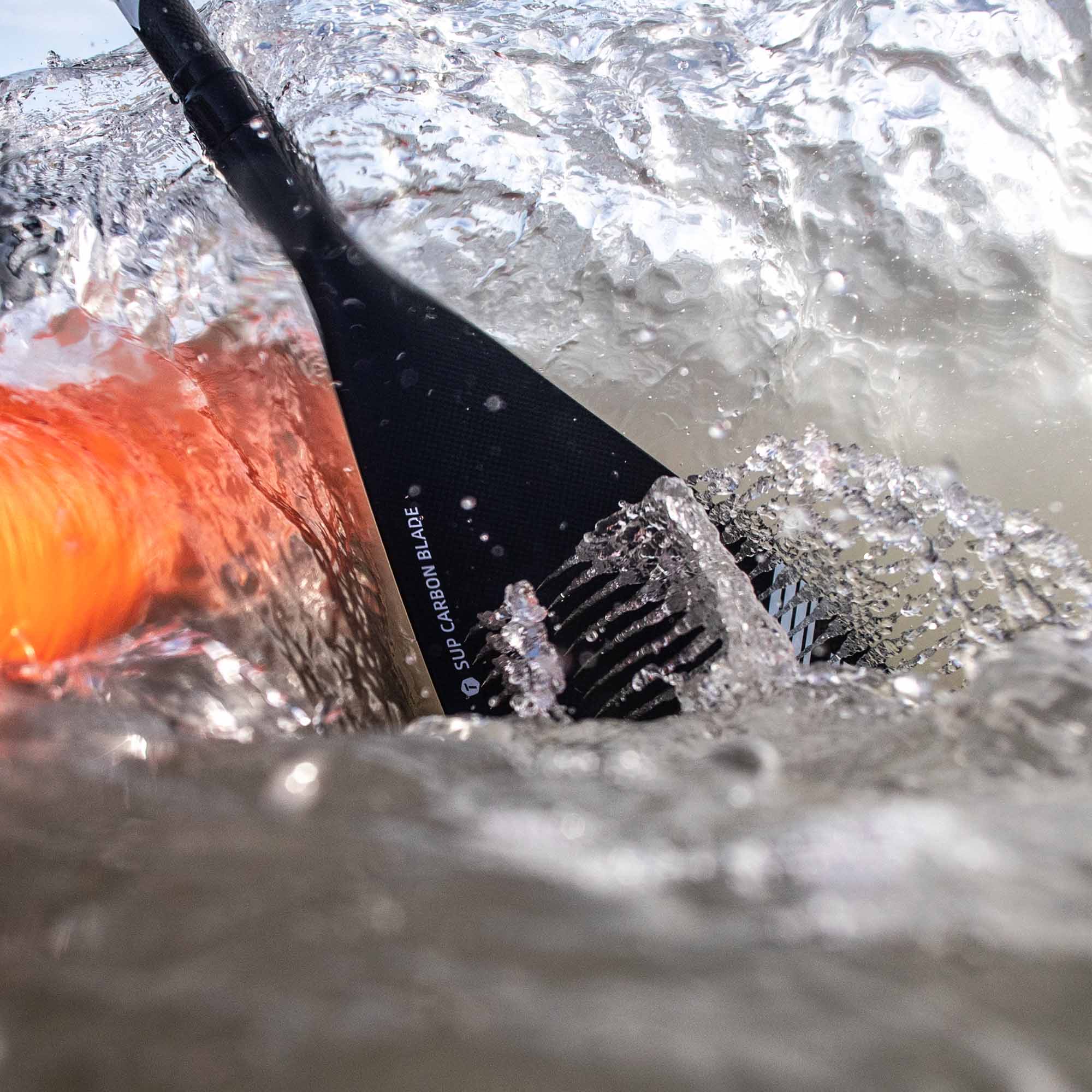
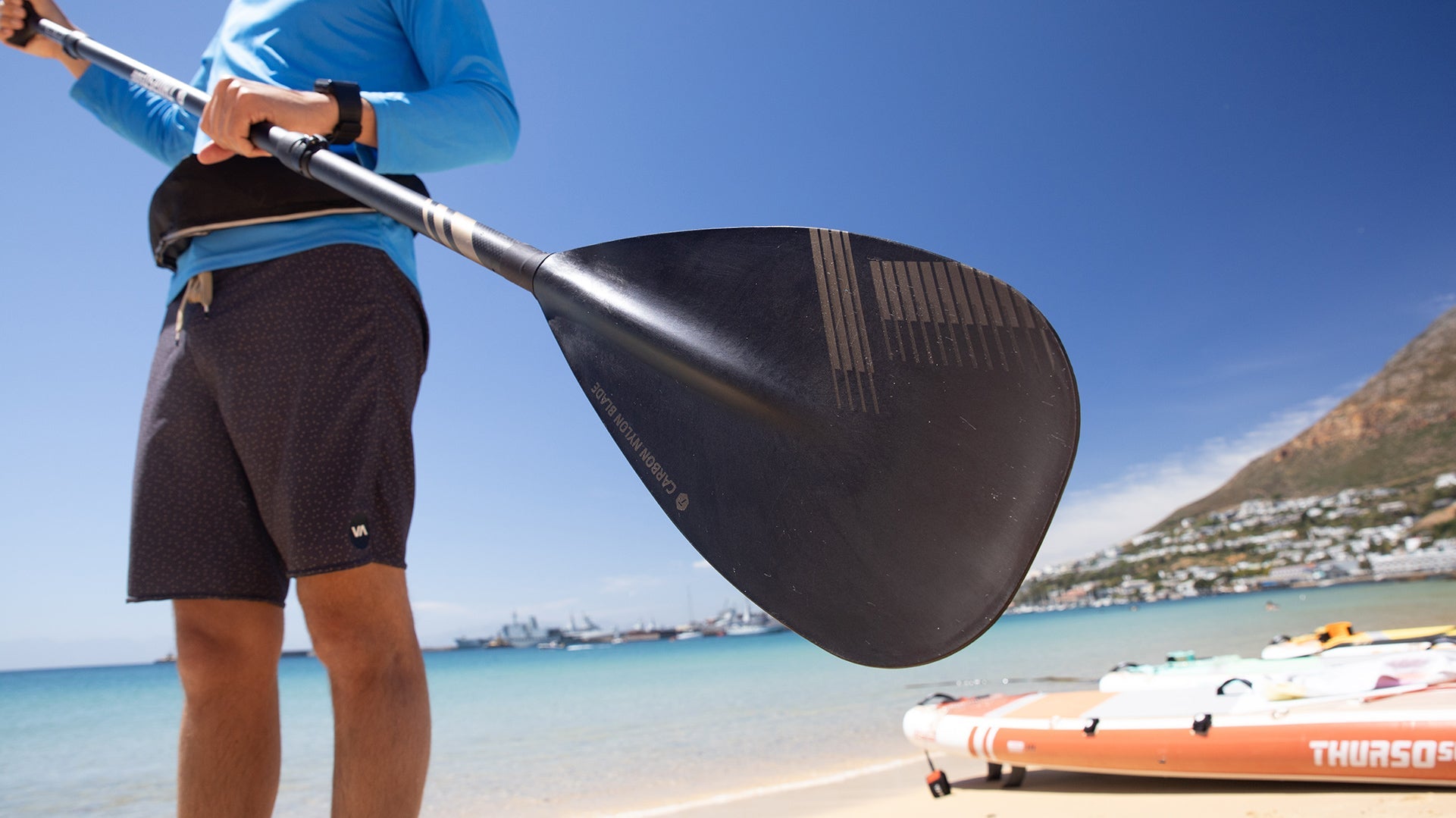
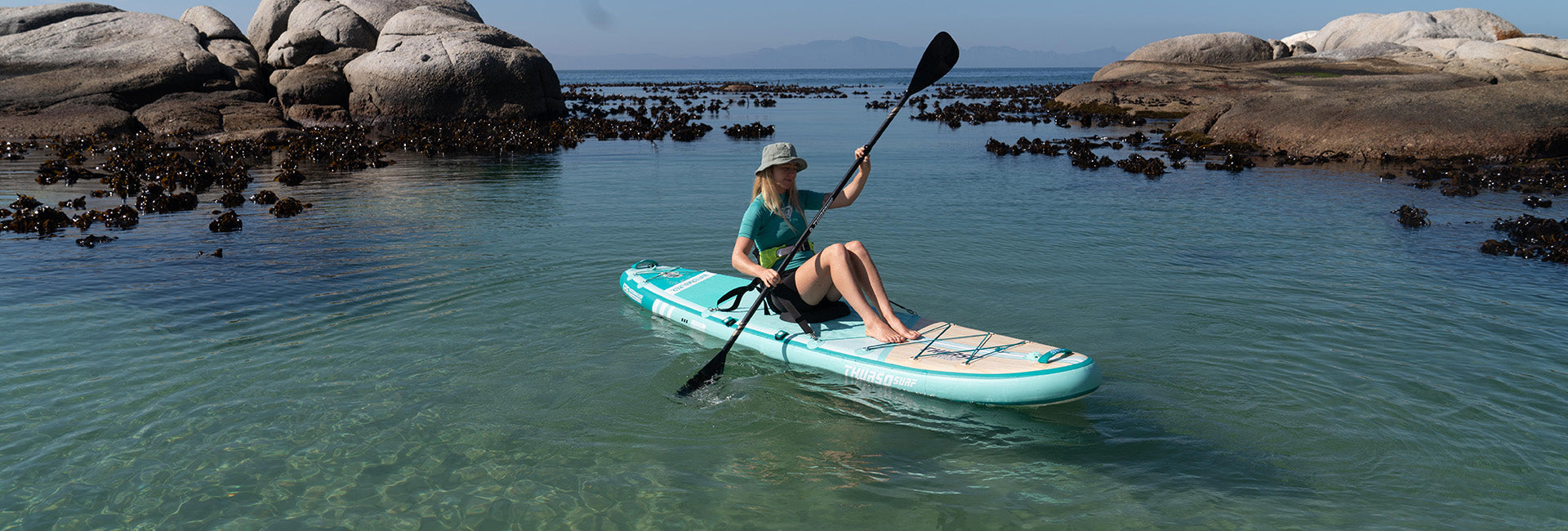

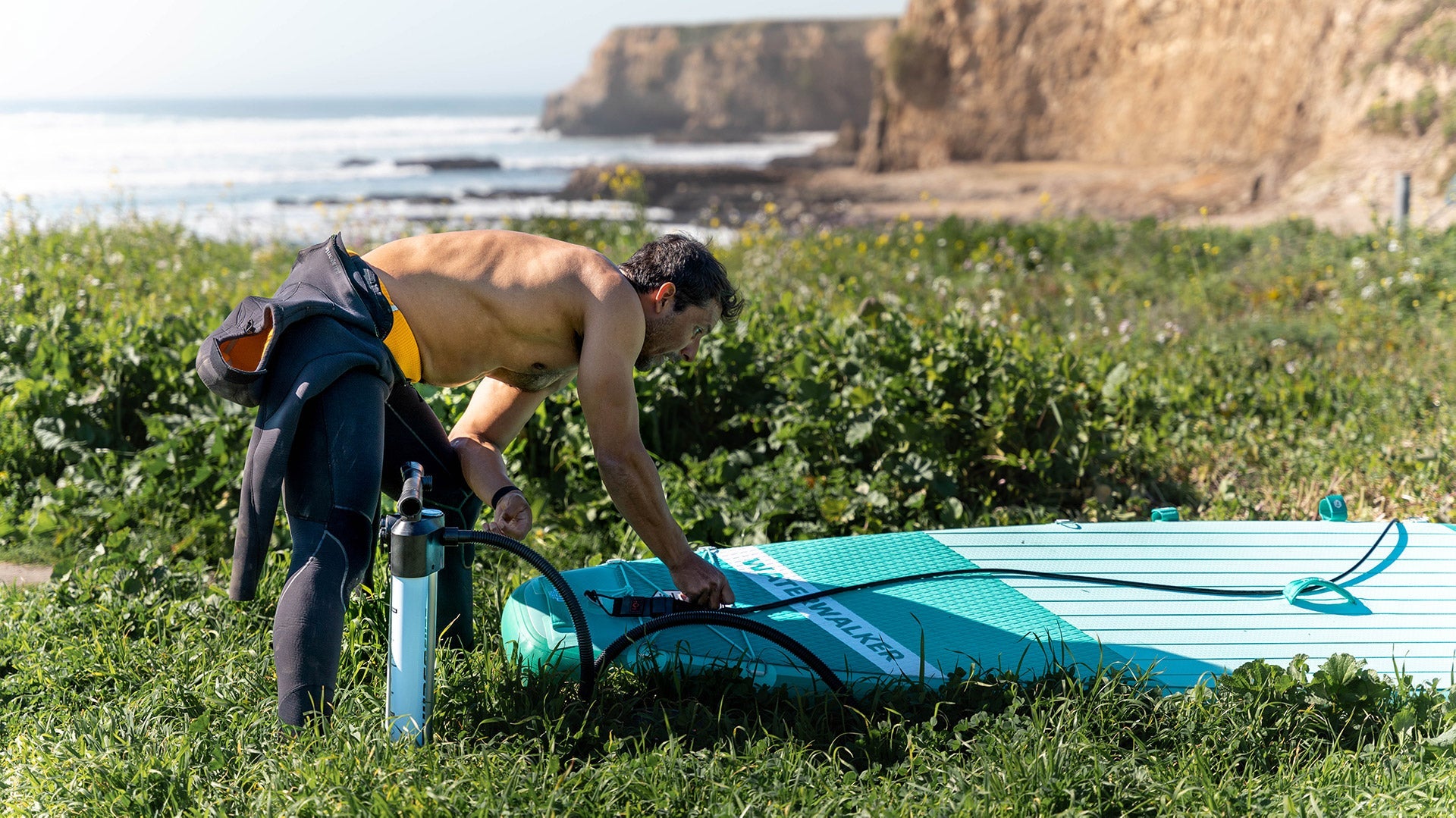
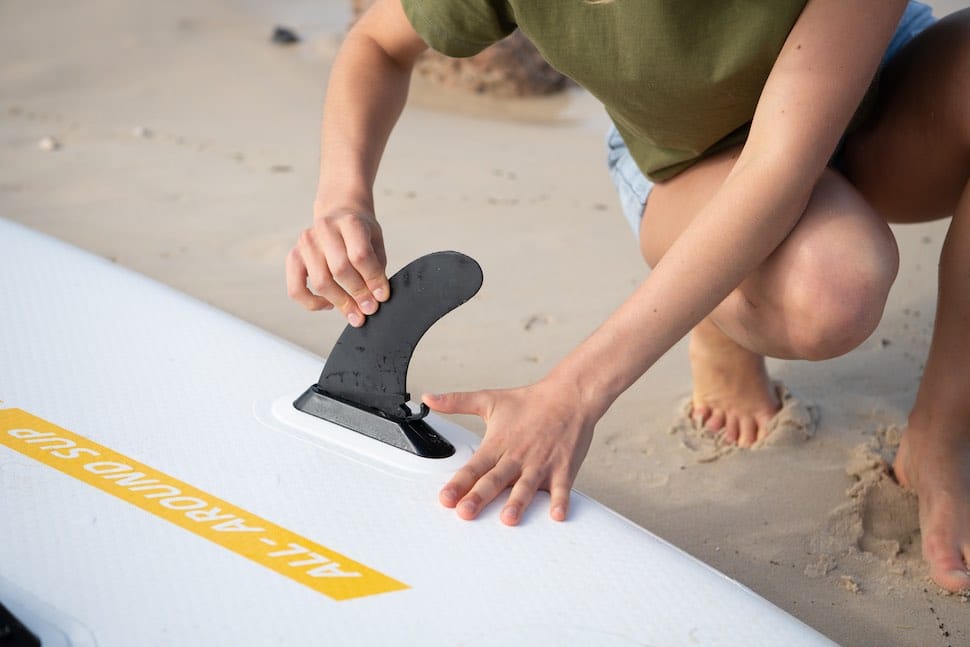
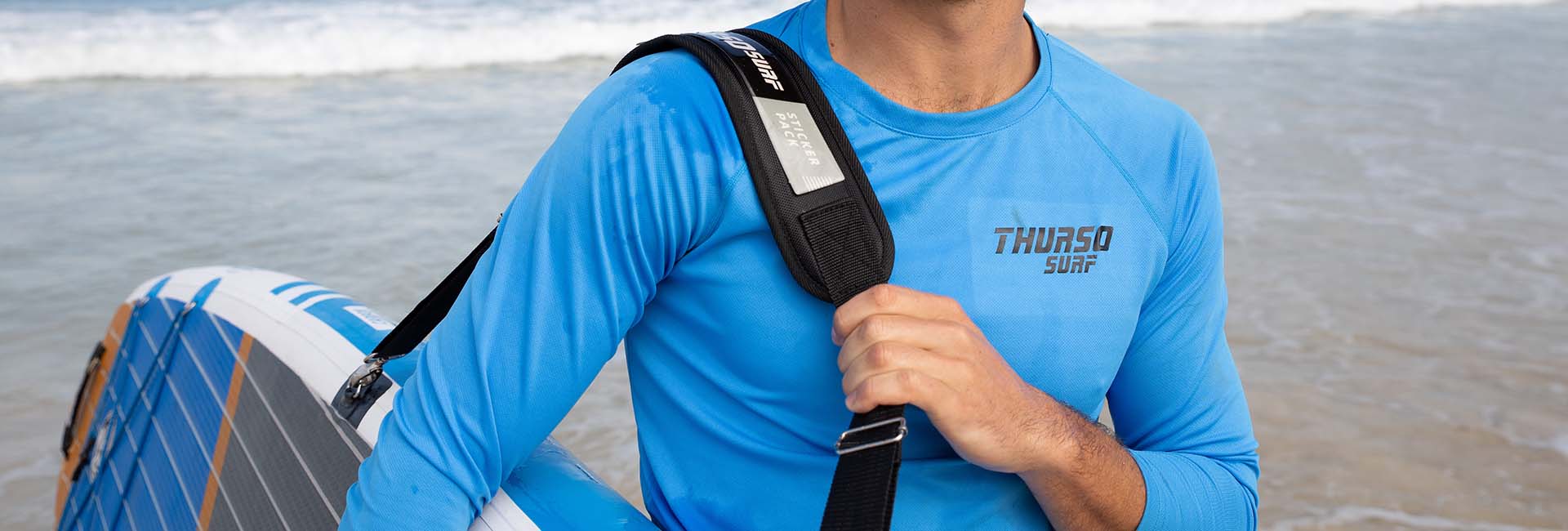
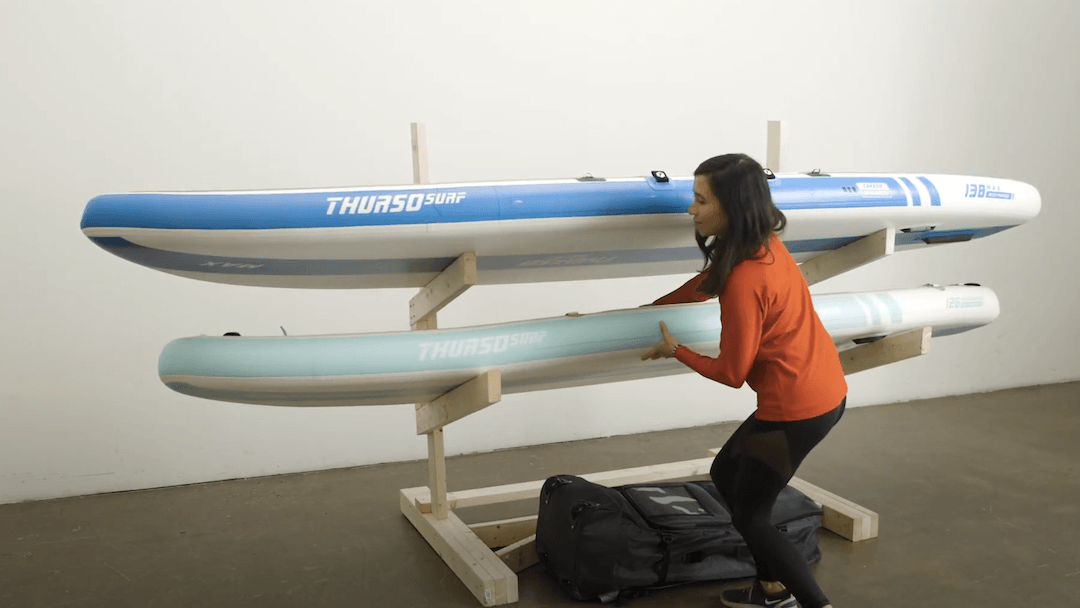
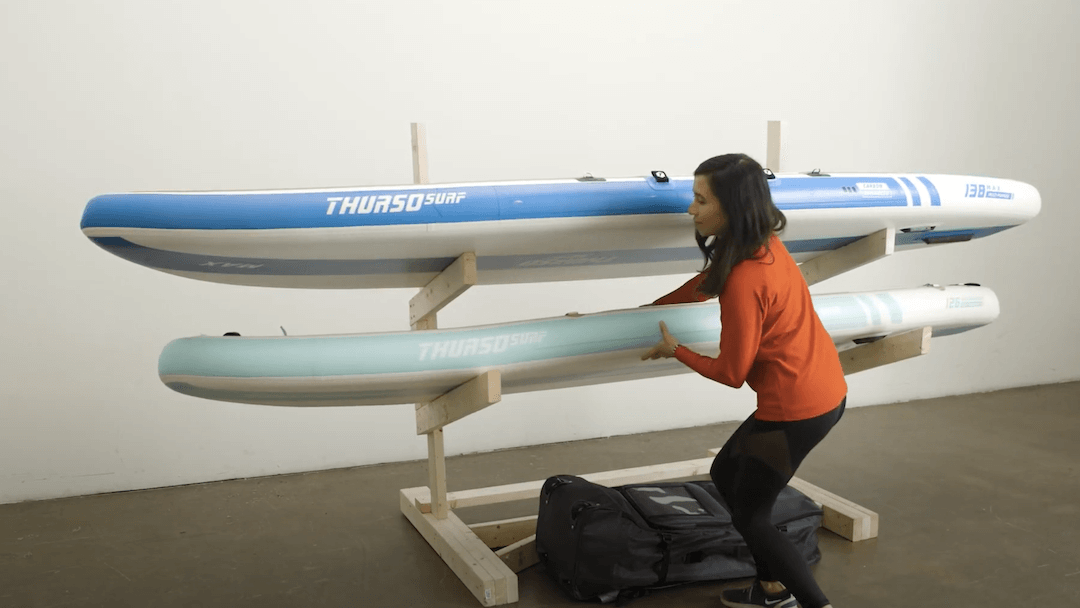


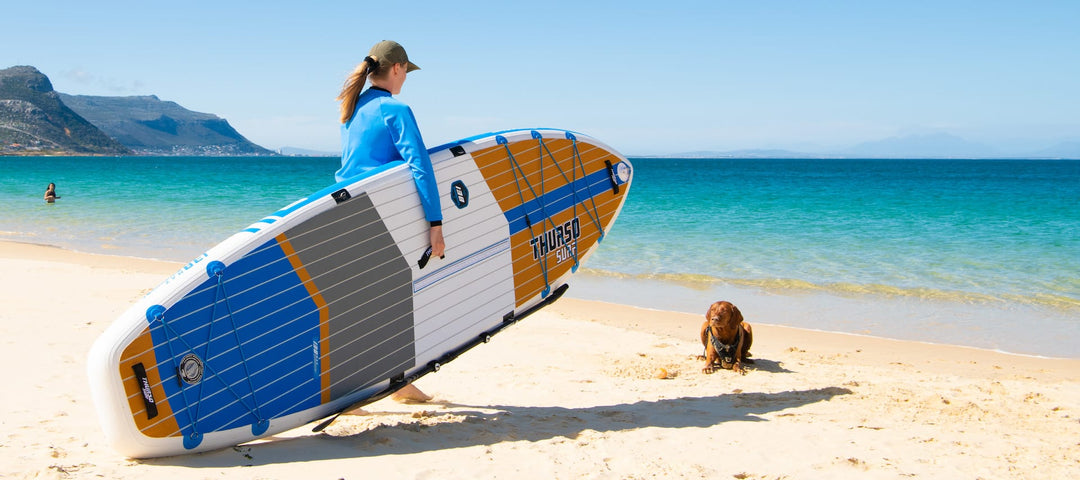
Leave a comment